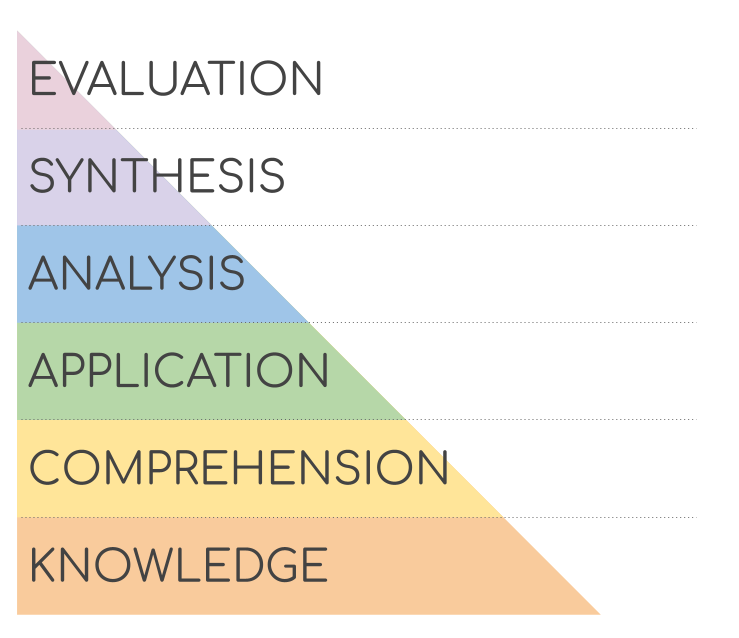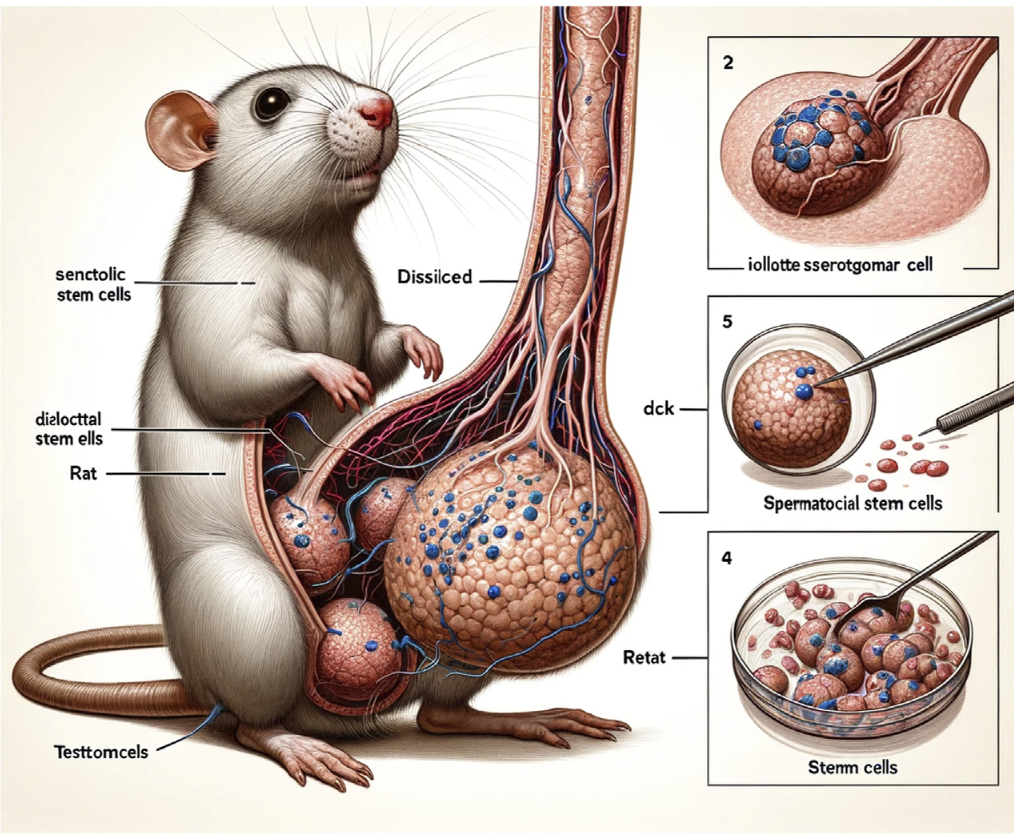|
Bloom's Taxonomy
Bloom's taxonomy is a framework for categorizing Educational aims and objectives, educational goals, developed by a committee of educators chaired by Benjamin Bloom in 1956. It was first introduced in the publication ''Taxonomy of Educational Objectives: The Classification of Educational Goals''. The taxonomy divides learning objectives into three broad domains: cognitive (knowledge-based), affective (emotion-based), and psychomotor (action-based), each with a hierarchy of skills and abilities. These domains are used by educators to structure curricula, assessments, and teaching methods to foster different types of learning. The cognitive domain, the most widely recognized component of the taxonomy, was originally divided into six levels: Knowledge, Comprehension, Application, Analysis, Synthesis, and Evaluation. In 2001, this taxonomy was revised, renaming and reordering the levels as Remember, Understand, Apply, Analyze, Evaluate, and Create. This domain focuses on intellectual s ... [...More Info...] [...Related Items...] OR: [Wikipedia] [Google] [Baidu] |
Educational Aims And Objectives
Although the noun forms of the three words ''aim'', ''objective'' and ''goal'' are often used synonymously, professionals in organised education define the educational ''aims'' and ''objectives'' more narrowly and consider them to be distinct from each other: aims are concerned with purpose whereas objectives are concerned with achievement. Usually an educational objective relates to gaining an ability, a skill, some knowledge, a new attitude etc. rather than having merely completed a given task. Since the achievement of objectives usually takes place during the course and the aims look forward into the student's career and life beyond the course one can expect the aims of a course to be relatively more long term than the objectives of that same course. Course objectives are a relatively shorter term goal which successful learners will achieve within the scope of the course itself. Objectives are often worded in course documentation in a way that explains to learners what they sh ... [...More Info...] [...Related Items...] OR: [Wikipedia] [Google] [Baidu] |
Information Literacies
Information is an Abstraction, abstract concept that refers to something which has the power Communication, to inform. At the most fundamental level, it pertains to the Interpretation (philosophy), interpretation (perhaps Interpretation (logic), formally) of that which may be sensed, or their abstractions. Any natural process that is not completely random and any observable pattern in any Media (communication), medium can be said to convey some amount of information. Whereas digital signals and other data use discrete Sign (semiotics), signs to convey information, other phenomena and artifacts such as analog signals, analogue signals, poems, pictures, music or other sounds, and current (fluid), currents convey information in a more continuous form. Information is not knowledge itself, but the meaning (philosophy), meaning that may be derived from a representation (mathematics), representation through interpretation. The concept of ''information'' is relevant or connected t ... [...More Info...] [...Related Items...] OR: [Wikipedia] [Google] [Baidu] |
Frontiers In Education
Frontiers Media SA is a publisher of peer-reviewed, open access, scientific journals currently active in science, technology, and medicine. It was founded in 2007 by Kamila and Henry Markram. Frontiers is based in Lausanne, Switzerland, with offices in the United Kingdom, Spain, and China. In 2022, Frontiers employed more than 1,400 people, across 14 countries. All Frontiers journals are published under a Creative Commons Attribution License. In 2015, Frontiers Media was classified as a possible predatory publisher by Jeffrey Beall, though Beall's list was taken offline two years later in a decision that remains controversial. History The first journal published was ''Frontiers in Neuroscience'', which opened for submission as a beta version in 2007. In 2010, Frontiers launched a series of another 11 journals in medicine and science. In February 2012, the Frontiers Research Network was launched, a social networking platform for researchers, intended to disseminate the open a ... [...More Info...] [...Related Items...] OR: [Wikipedia] [Google] [Baidu] |
Vygotskian Constructivism
Lev Semyonovich Vygotsky (, ; ; – June 11, 1934) was a Russian and Soviet psychologist, best known for his work on psychological development in children and creating the framework known as cultural-historical activity theory. After his early death, his books and research were banned in the Soviet Union until Joseph Stalin's death in 1953, with a first collection of major texts published in 1956. His major ideas include: *''The social origin of mind'': Vygotsky believed that human mental and cognitive abilities are not biologically determined, but instead created and shaped by use of language and tools in the process of interacting and constructing the cultural and social environment. *''The importance of mediation'': He saw mediation as the key to human development, because it leads to the use of cultural tools and becomes a pathway for psychological development through the process of interiorization. *''The zone of proximal development'': Vygotsky introduced the concept, w ... [...More Info...] [...Related Items...] OR: [Wikipedia] [Google] [Baidu] |
Instructional Scaffolding
Instructional scaffolding is the support given to a student by an instructor throughout the learning process. This support is specifically tailored to each student; this instructional approach allows students to experience student-centered learning, which tends to facilitate more efficient learning than teacher-centered learning. This learning process promotes a deeper level of learning than many other common teaching strategies. Instructional scaffolding provides sufficient support to promote learning when concepts and skills are being first introduced to students. These supports may include resource, compelling task, templates and guides, and/or guidance on the development of cognitive and social skills. Instructional scaffolding could be employed through modeling a task, giving advice, and/or providing coaching. These supports are gradually removed as students develop autonomous learning strategies, thus promoting their own cognitive, affective and psychomotor learning skill ... [...More Info...] [...Related Items...] OR: [Wikipedia] [Google] [Baidu] |
The Conversation (website)
''The Conversation'' is a network of nonprofit media outlets publishing news stories and research reports online, authored by academics with professional journalist editors to produce accessible research-informed outputs. Articles are written by academics and researchers under a Creative Commons license, allowing reuse without modification. Copyright terms for images are generally listed in the image caption and attribution. Its model has been described as explanatory journalism. Except in "exceptional circumstances", it only publishes articles by "academics employed by, or otherwise formally connected to, accredited institutions, including universities and accredited research bodies". The website was launched in Australia in March 2011. The network has since expanded globally with a variety of local editions originating from around the world. In September 2019, ''The Conversation'' reported a monthly online audience of 10.7 million users, and a combined reach o ... [...More Info...] [...Related Items...] OR: [Wikipedia] [Google] [Baidu] |
The American Biology Teacher
The National Association of Biology Teachers (NABT) is an incorporated association of biology educators in the United States. It was initially founded in response to the poor understanding of biology and the decline in the teaching of the subject in the 1930s. It has grown to become a national representative organisation which promotes the teaching of biology, supports the learning of biology based on scientific principles and advocates for biology within American society. The National Conference and the journal, ''The American Biology Teacher'', are two mechanisms used to achieve those goals. The NABT has also been an advocate for the teaching of evolution in the debate about creation and evolution in public education in the United States, playing a role in a number of court cases and hearings throughout the country. History The NABT was formed in 1938 in New York City. The journal of the organisation (''The American Biology Teacher'') was created in the same year. In 1944, Hel ... [...More Info...] [...Related Items...] OR: [Wikipedia] [Google] [Baidu] |
Schema (psychology)
In psychology and cognitive science, a schema (: schemata or schemas) describes a pattern of thought or behavior that organizes categories of information and the relationships among them. It can also be described as a mental structure of preconceived ideas, a framework representing some aspect of the world, or a system of organizing and perceiving new information, such as a mental schema or conceptual model. Schemata influence attention and the absorption of new knowledge: people are more likely to notice things that fit into their schema, while re-interpreting contradictions to the schema as exceptions or distorting them to fit. Schemata have a tendency to remain unchanged, even in the face of contradictory information. Schemata can help in understanding the world and the rapidly changing environment. People can organize new perceptions into schemata quickly as most situations do not require complex thought when using schema, since automatic thought is all that is required. ... [...More Info...] [...Related Items...] OR: [Wikipedia] [Google] [Baidu] |
Benjamin Bloom
Benjamin Samuel Bloom (February 21, 1913 – September 13, 1999) was an American educational psychology, educational psychologist and Didactic method, didactician who made contributions to the classification of educational objectives and to the theory of mastery learning. He has greatly influenced the practices and philosophies of educators around the world from the latter part of the twentieth century. Perhaps his most significant contribution to the field of education was developing a comprehensive system of describing, assessing and classifying educational outcomes, now known as Bloom's taxonomy. Early life and education Bloom was born in Lansford, Pennsylvania, to an immigrant Jewish family. His parents fled a climate of discrimination in Russia. He received a bachelor's degree from Pennsylvania State University in 1935 and a master's degree from Penn State, also in 1935. He received a doctorate from the University of Chicago in 1942 and joined its faculty in 1944. Fr ... [...More Info...] [...Related Items...] OR: [Wikipedia] [Google] [Baidu] |
Attitude (psychology)
In psychology, an attitude "is a summary evaluation of an object of thought. An attitude object can be anything a person discriminates or holds in mind". Attitudes include beliefs (cognition), emotional responses ( affect) and behavioral tendencies ( intentions, motivations). In the classical definition an attitude is persistent, while in more contemporary conceptualizations, attitudes may vary depending upon situations, context, or moods. While different researchers have defined attitudes in various ways, and may use different terms for the same concepts or the same term for different concepts, two essential attitude functions emerge from empirical research. For individuals, attitudes are cognitive schema that provide a structure to organize complex or ambiguous information, guiding particular evaluations or behaviors. More abstractly, attitudes serve higher psychological needs: expressive or symbolic functions (affirming values), maintaining social identity, and regulating e ... [...More Info...] [...Related Items...] OR: [Wikipedia] [Google] [Baidu] |
Emotion
Emotions are physical and mental states brought on by neurophysiology, neurophysiological changes, variously associated with thoughts, feelings, behavior, behavioral responses, and a degree of pleasure or suffering, displeasure. There is no scientific consensus on a definition. Emotions are often reciprocal determinism, intertwined with mood (psychology), mood, temperament, personality psychology, personality, disposition, or creativity. Research on emotion has increased over the past two decades, with many fields contributing, including psychology, medicine, history, sociology of emotions, computer science and philosophy. The numerous attempts to explain the origin, functional accounts of emotion, function, and other aspects of emotions have fostered intense research on this topic. Theorizing about the evolutionary origin and possible purpose of emotion dates back to Charles Darwin. Current areas of research include the neuroscience of emotion, using tools like positron ... [...More Info...] [...Related Items...] OR: [Wikipedia] [Google] [Baidu] |



